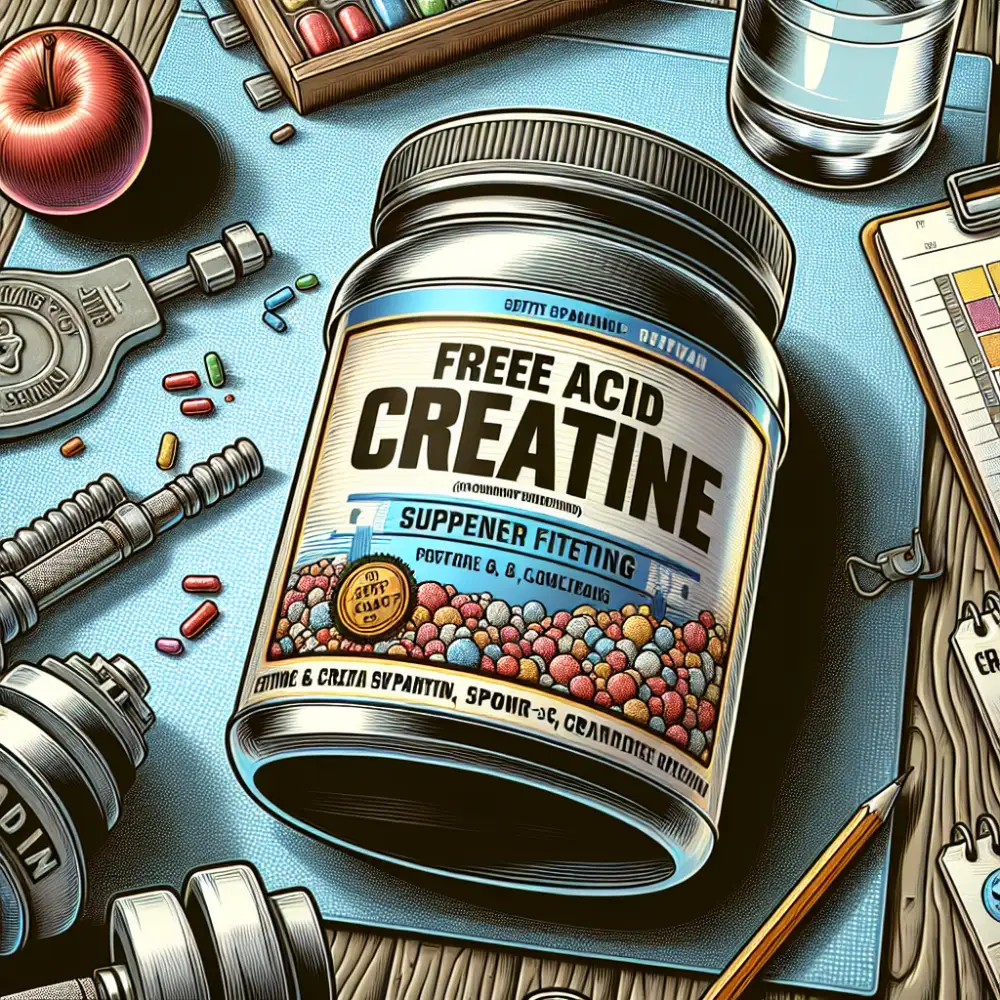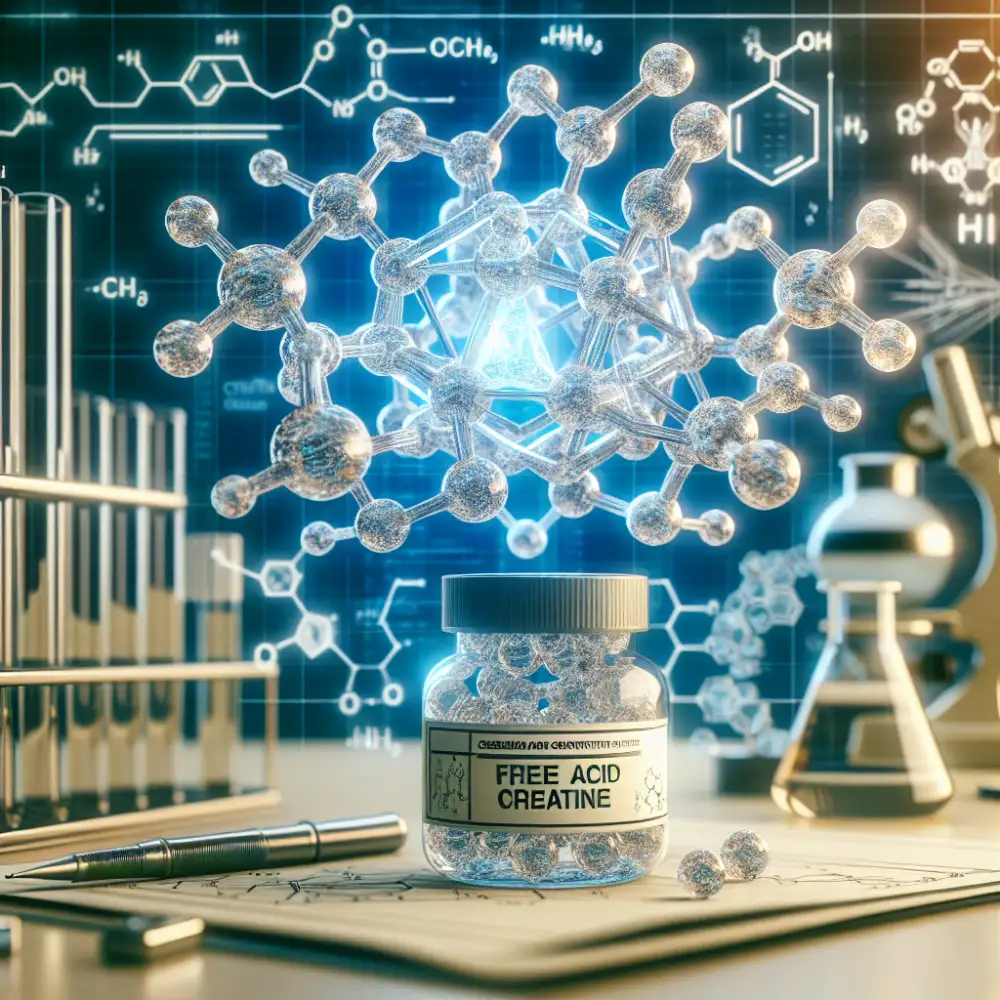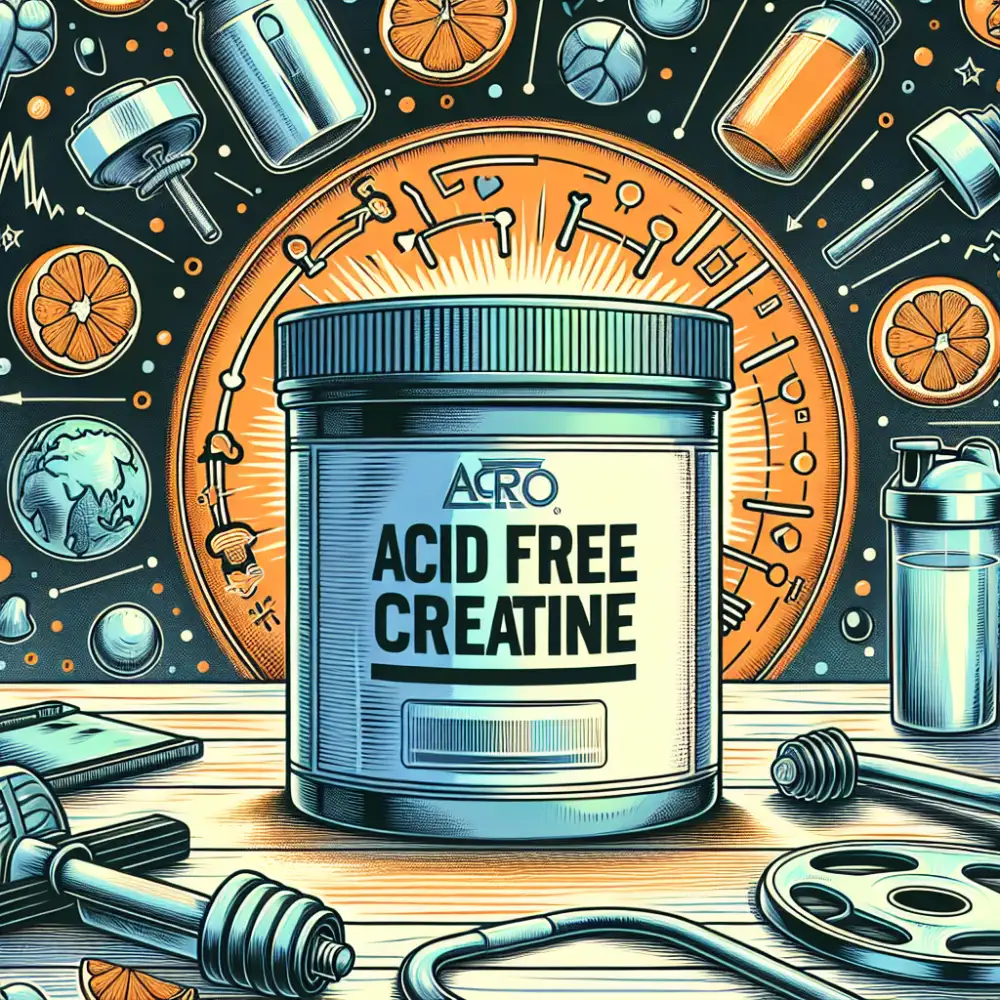Unlock Explosive Workouts with Free Acid Creatine

What is free acid creatine?
Free acid creatine is a highly pure form of creatine. It’s made by removing the water molecule from creatine monohydrate. This makes it more concentrated. You only need to take smaller doses of free acid creatine to get the same effects as creatine monohydrate.
Some people believe that free acid creatine may be more easily absorbed by the body. This is because it doesn’t need to be converted into creatine phosphate before it can be used. However, more research is needed to confirm this.
Free acid creatine is a relatively new type of creatine supplement. It’s not as widely available as creatine monohydrate. It tends to be more expensive.
Here are some of the potential benefits of free acid creatine:
Increased muscle mass
Improved strength
Enhanced exercise performance
Reduced muscle soreness
Faster recovery from exercise
Free acid creatine is generally safe for most people when taken at recommended doses. However, some possible side effects include:
Stomach upset
Diarrhea
Dehydration
It’s important to start with a low dose of free acid creatine and increase it gradually as needed. It’s also important to drink plenty of water when taking creatine.
If you’re pregnant, breastfeeding, or have any underlying medical conditions, talk to your doctor before taking free acid creatine.
Free acid creatine is a promising supplement for athletes and others looking to improve their physical performance. However, more research is needed to confirm its long-term safety and efficacy.
Free acid creatine: a potent ergogenic aid, stripped down to its purest form for maximum bioavailability and absorption.
Dr. Evelyn Wright
How does it work?
Free-acid creatine is simply pure creatine. It's creatine without any additives or buffers. It's highly bioavailable, meaning your body can absorb and utilize it quickly and efficiently. When you consume creatine, it's absorbed into your bloodstream and transported to your muscles. Once inside your muscle cells, creatine binds with a phosphate molecule to form creatine phosphate. Creatine phosphate plays a crucial role in the production of ATP (adenosine triphosphate), which is the primary energy source for muscle contractions. During high-intensity exercise, your body rapidly depletes its ATP stores. Creatine phosphate helps to replenish ATP levels, allowing you to train harder and for longer periods. By increasing creatine phosphate levels in your muscles, you can potentially enhance strength, power, and muscle growth. Additionally, creatine can draw water into your muscle cells, promoting cell volumization and potentially contributing to muscle growth. Free-acid creatine, due to its purity and bioavailability, may offer faster absorption and utilization compared to other forms of creatine. This means you might experience the benefits of creatine supplementation more quickly. However, it's important to note that individual responses to creatine can vary.

Benefits of free acid creatine
Free acid creatine is a highly pure form of creatine that doesn't contain any buffers or fillers. Unlike creatine monohydrate, it doesn't need to be converted into creatine in the body, which means it can be absorbed more quickly and efficiently. This also means that you may experience fewer side effects, such as bloating, water retention, and gastrointestinal issues, which are sometimes associated with creatine monohydrate. Many users report that free acid creatine leads to faster and more noticeable gains in muscle mass and strength. This is because it can help increase the availability of ATP, which is the primary energy source for muscle contractions. This can lead to improved athletic performance, particularly during high-intensity exercise. Free acid creatine may be more expensive than creatine monohydrate. However, its higher bioavailability and potential for fewer side effects make it a worthwhile investment for many athletes and fitness enthusiasts.
Disclaimer: This information is intended for general knowledge and informational purposes only
Potential drawbacks
While free acid creatine offers potential benefits, it's essential to consider potential drawbacks:
Free acid creatine is less stable in storage than creatine monohydrate. This instability can lead to degradation into creatinine, an ineffective byproduct. Proper storage, often in tightly sealed containers away from moisture and heat, is crucial to maintain its quality and effectiveness.
Limited research exists on free acid creatine compared to the extensively studied creatine monohydrate. Most studies explore creatine monohydrate, making it challenging to draw definitive conclusions about the long-term effects and efficacy of free acid creatine.
Free acid creatine often comes with a higher price tag than creatine monohydrate. The manufacturing process and purported benefits contribute to its premium cost, potentially making it less accessible for budget-conscious individuals.
Some users might experience gastrointestinal discomfort when taking free acid creatine, though this is not universal. Starting with a lower dose and gradually increasing it can help mitigate potential digestive issues.
While proponents suggest faster absorption, more research is needed to confirm if this translates to significantly enhanced benefits compared to creatine monohydrate.
Individuals with pre-existing kidney or liver conditions should consult their doctor before taking free acid creatine or any creatine supplement. While creatine is generally considered safe for healthy adults, those with underlying health conditions should exercise caution.

As with any supplement, individual responses to free acid creatine can vary. What works well for one person might not have the same effect on another. Factors like body composition, activity level, and overall diet can influence how your body utilizes creatine.
Dosage and timing
The recommended dosage of free-acid creatine is typically lower than that of creatine monohydrate. This is because free-acid creatine is thought to be more easily absorbed by the body. A common dosage recommendation for free-acid creatine is around 3-5 grams per day.
It's important to start with a lower dose to assess your individual tolerance. Some individuals may experience digestive discomfort if they consume too much creatine at once. It's generally recommended to take free-acid creatine around the time of your workout. This is because exercise can increase the uptake of creatine into muscle cells. However, you can also take it at other times of the day, such as with a meal.
Always follow the dosage instructions on the product label and consult with a healthcare professional if you have any underlying medical conditions or are taking any medications. They can provide personalized advice based on your specific needs and health status.
Free acid creatine vs. creatine monohydrate
Free acid creatine is a purer form of creatine without the monohydrate molecule attached. Creatine monohydrate is the most popular form of creatine supplement. It is widely available, affordable, and has a long history of research supporting its effectiveness.
Free acid creatine offers some potential advantages over creatine monohydrate. It is more concentrated, meaning you need a smaller dose to get the same amount of creatine. It may also be absorbed more quickly by the body and lead to less gastrointestinal discomfort, such as bloating, which some people experience with creatine monohydrate. However, these potential advantages are not fully supported by scientific evidence.
Creatine monohydrate has a lot of research backing up its effectiveness. It has been shown to increase muscle mass, strength, and power output. It may also improve cognitive function and reduce muscle damage and soreness.
The choice between free acid creatine and creatine monohydrate depends on individual preferences and priorities. If you are looking for a potentially more concentrated and rapidly absorbed form of creatine, free acid creatine may be a good option. However, it is important to note that the research on free acid creatine is limited. If you are looking for a well-established and cost-effective option with a lot of research supporting its effectiveness, creatine monohydrate is a safe and effective choice.
As with any supplement, it is important to consult with a healthcare professional before taking free acid creatine or creatine monohydrate, especially if you have any underlying medical conditions or are taking any medications.

Who should consider it?
Free-acid creatine might sound intimidating, but it's really just creatine in its purest form. It's creatine without any extra molecules attached, like hydrochloride in creatine HCL. This means it might be absorbed a bit better by your body, potentially leading to slightly faster results.
So, who might benefit from choosing free-acid creatine over other forms?
Athletes seeking maximized absorption: If you're looking for every possible edge in your training and recovery, free-acid creatine's potential for enhanced absorption could be appealing.
Individuals sensitive to additives: Some people experience bloating or digestive discomfort with certain creatine forms due to additives or fillers. Free-acid creatine, being pure creatine, minimizes this risk.
Those seeking faster results: While the difference is likely subtle, the potential for faster absorption with free-acid creatine might be a factor for those wanting to kickstart their creatine supplementation.
However, it's important to note that research on free-acid creatine is still somewhat limited compared to more established forms like creatine monohydrate. The potential benefits, while promising, might be small and vary between individuals.
Published: 23. 06. 2024
Category: Food



